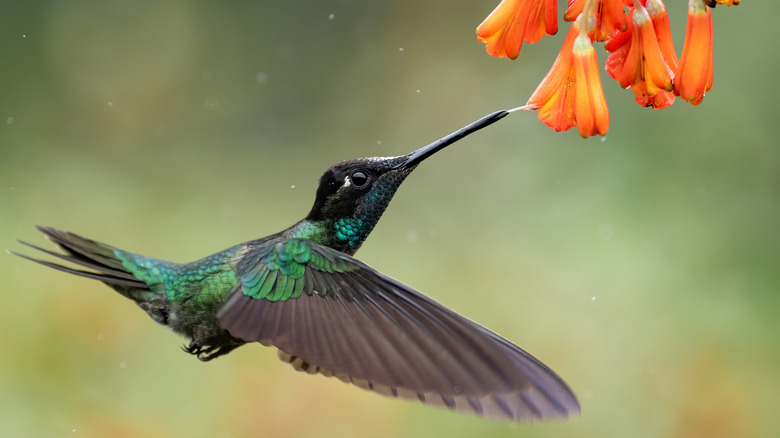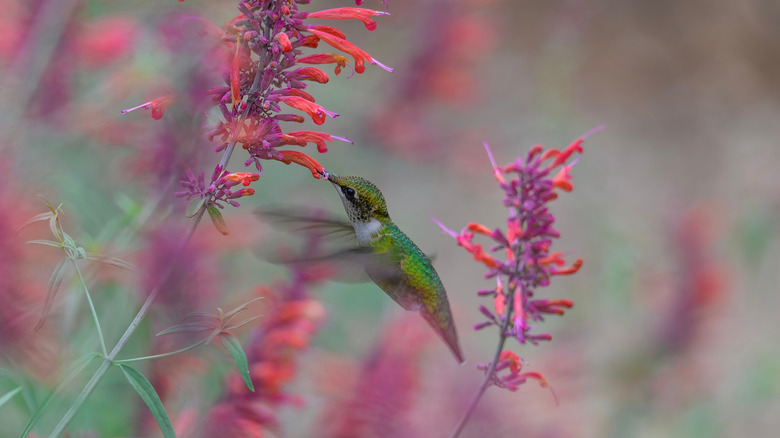Fill An Empty Garden With A Fast-Growing Perennial That Hummingbirds Love
If you find yourself with vacancies in your garden real estate and want to dedicate those spots to plants that attract everyone's favorite pollinating bird, Agastache is one of the flowers that will transform your space into a hummingbird heaven. Also known as licorice mint, giant hyssop, or hummingbird mint, these perennials produce gorgeous spikes of flowers with blooms in shades of blue, purple, white, pink, orange, yellow, or red. Hummingbirds are attracted to brightly-colored, tubular flowers, making Agastache the perfect way to draw these pollinators into your yard. And since there are many different species and cultivars available, you can plant several varieties together to beautify the garden and attract even more hummingbirds.
These low-maintenance members of the mint family have an upright, clumping growth habit and can be counted among the many fragrant perennial flowers that'll make your garden smell amazing all summer long. The abundance of Agastache choices means that it will be easy to fill your garden with a colorful mix of these deer-resistant, attractive plants. Some types of hummingbird mint can bloom the first year when grown from seed, making it a fast-growing perennial for gardeners who have the right growing conditions.
How to grow Agastache to attract hummingbirds
Most hummingbird mints can be grown in USDA Hardiness Zones 5 through 10, while some are even adapted to zone 4. Whether filling up your garden with Agastache or just adding a plant or two, grow it in full sun and provide well-drained soil. If you have heavy soil that drains poorly, consider growing this plant in a container, since it won't thrive when its roots stay wet during the winter. Though drought resistant once established, for the first year these plants require moist soil during warm weather.
Grow this fragrant plant in an empty cottage garden or one designed for pollinators, since bees and butterflies also love it. Some hummingbird mints grow to be rather tall — 4 feet or more — and these types can find the perfect spot in the back of a flower border. To make your planting even more desirable to pollinators, plant it with some other native plants for a sustainable approach to attracting hummingbirds, such as goldenrod, purple coneflower, or bee balm, also known as bergamot. In addition to playing a key role in attracting hummingbirds and other pollinators to your yard, you can also use Agastache's edible leaves to make a soothing tea.

